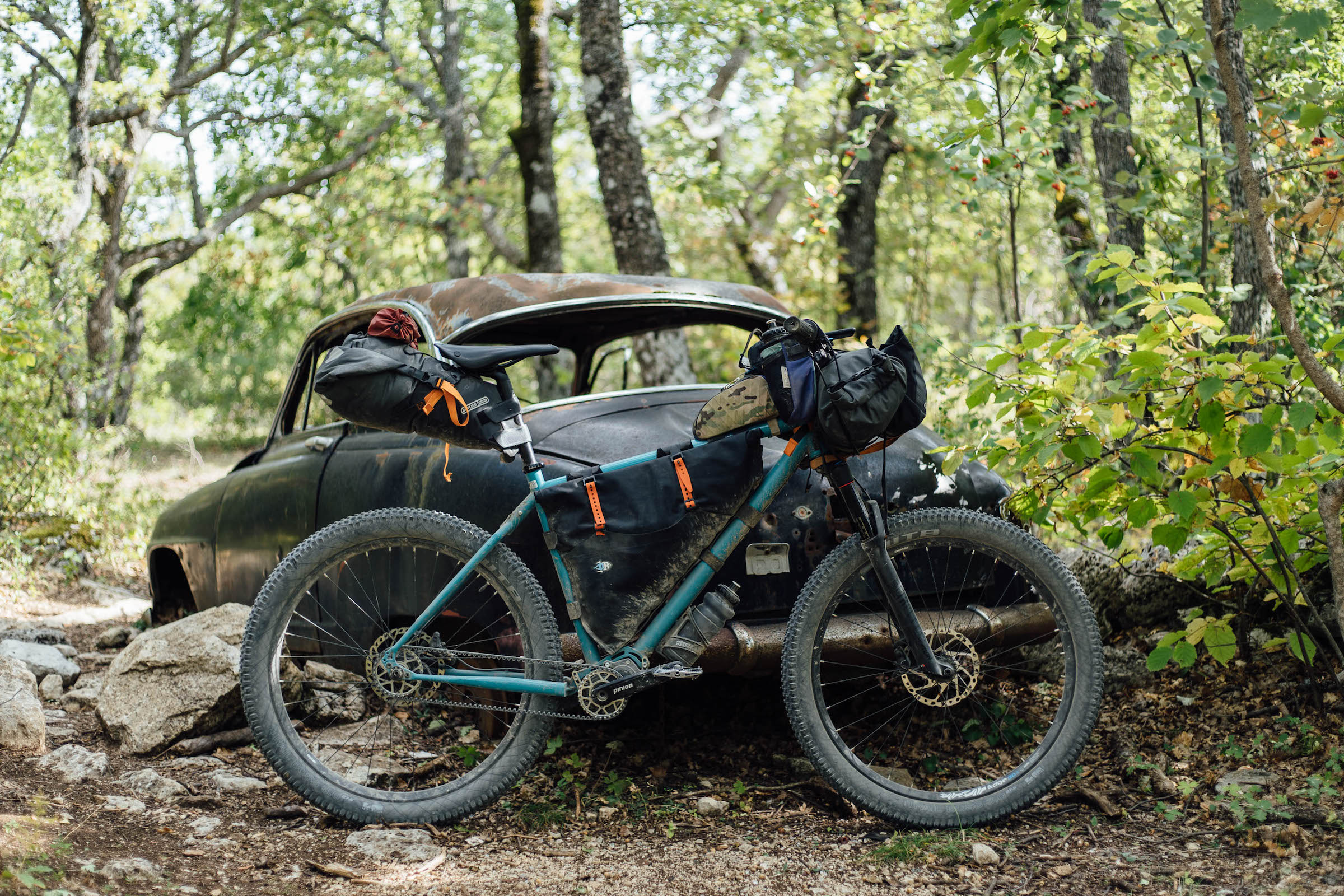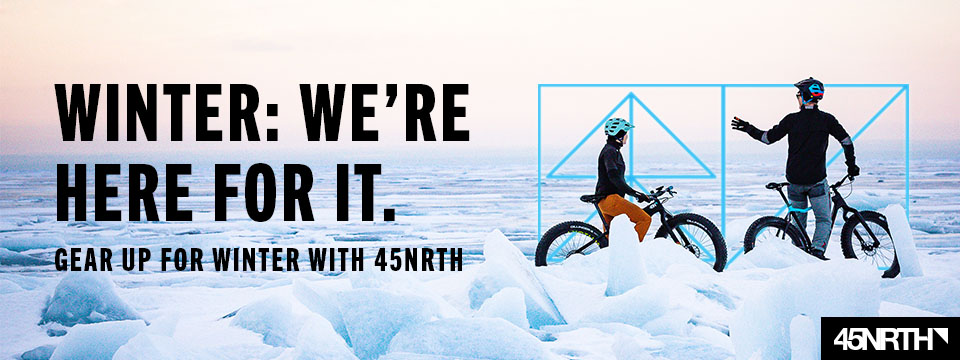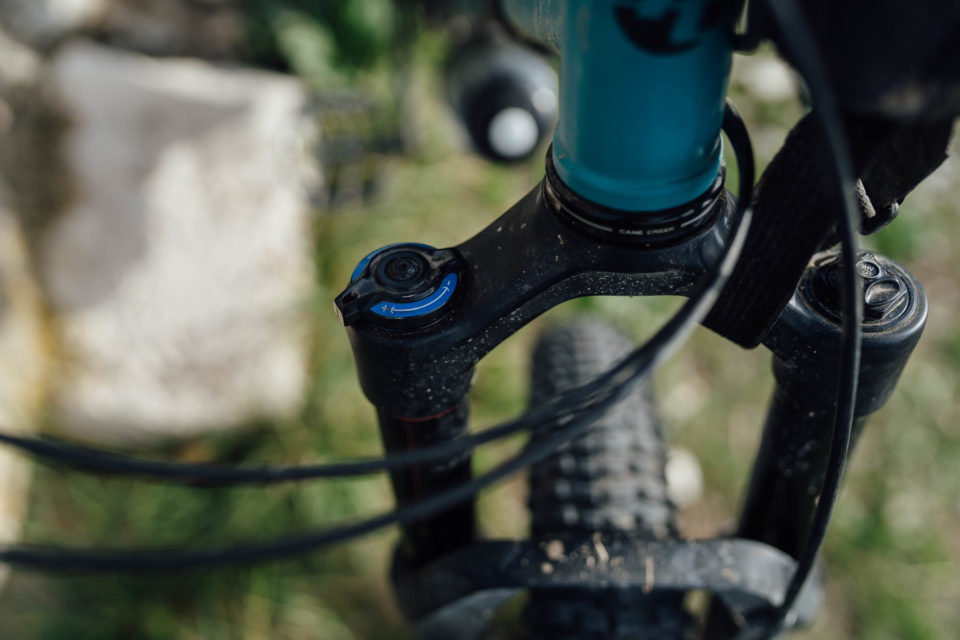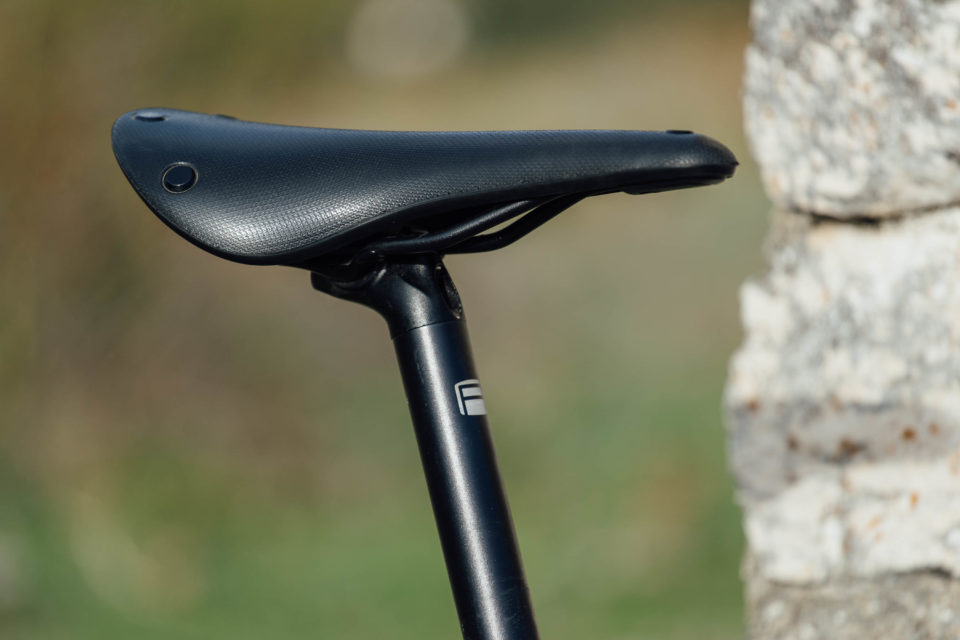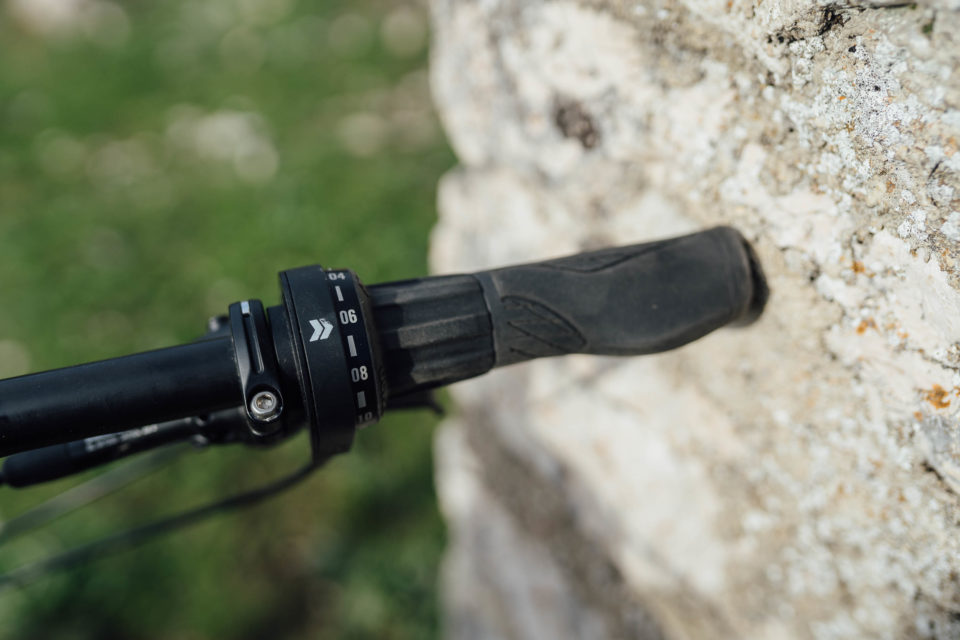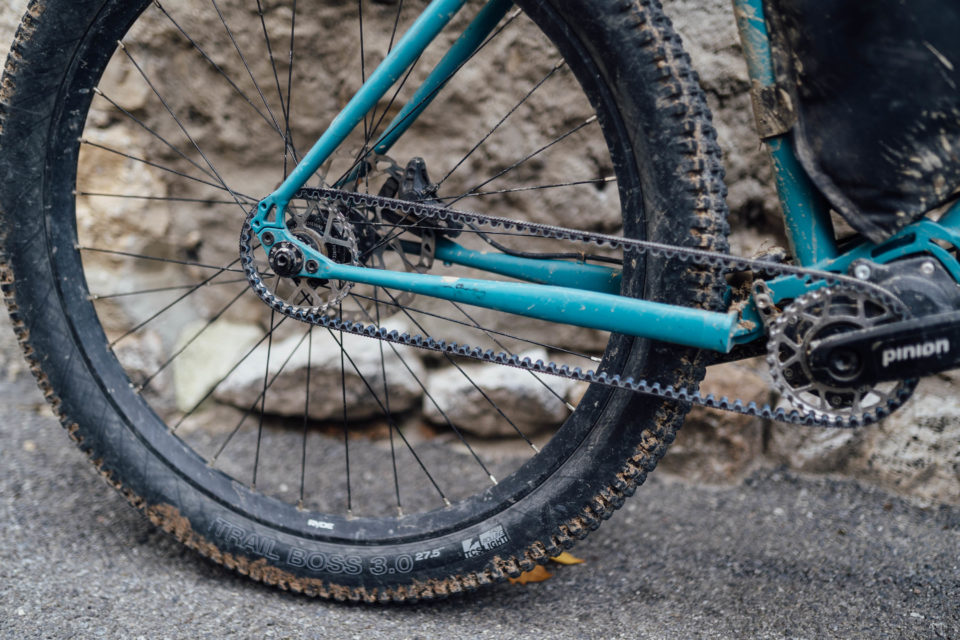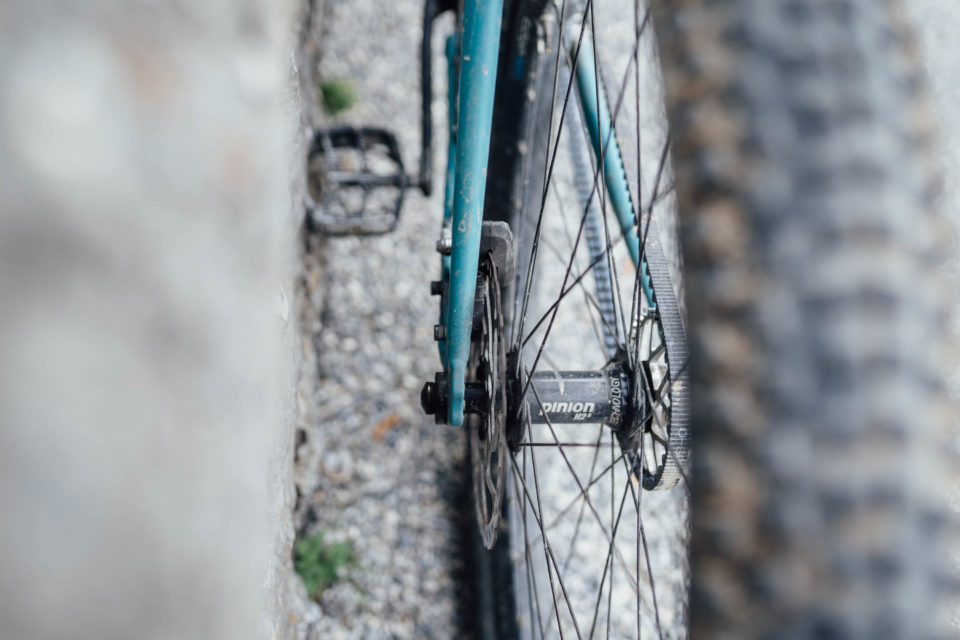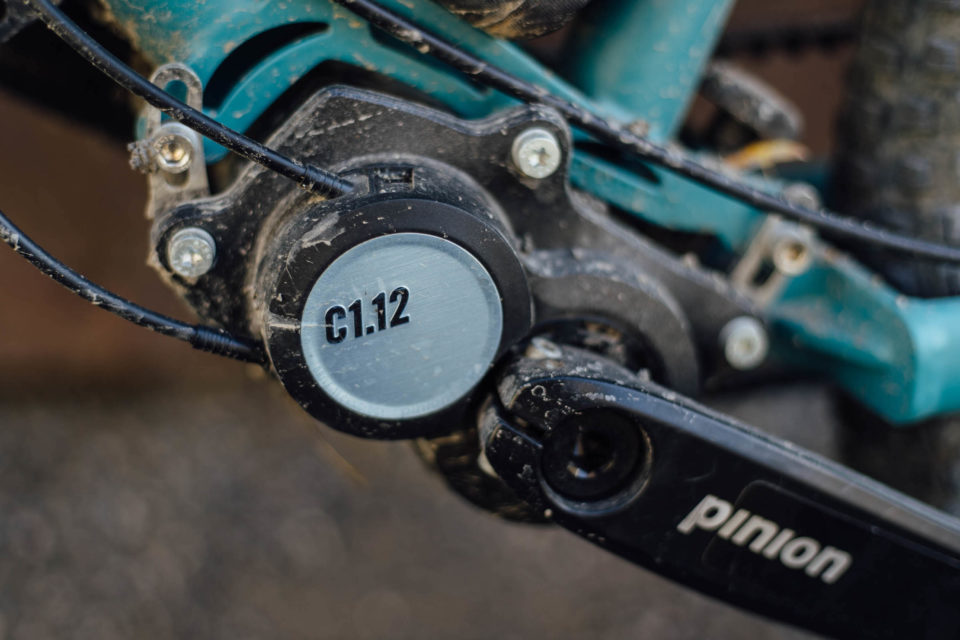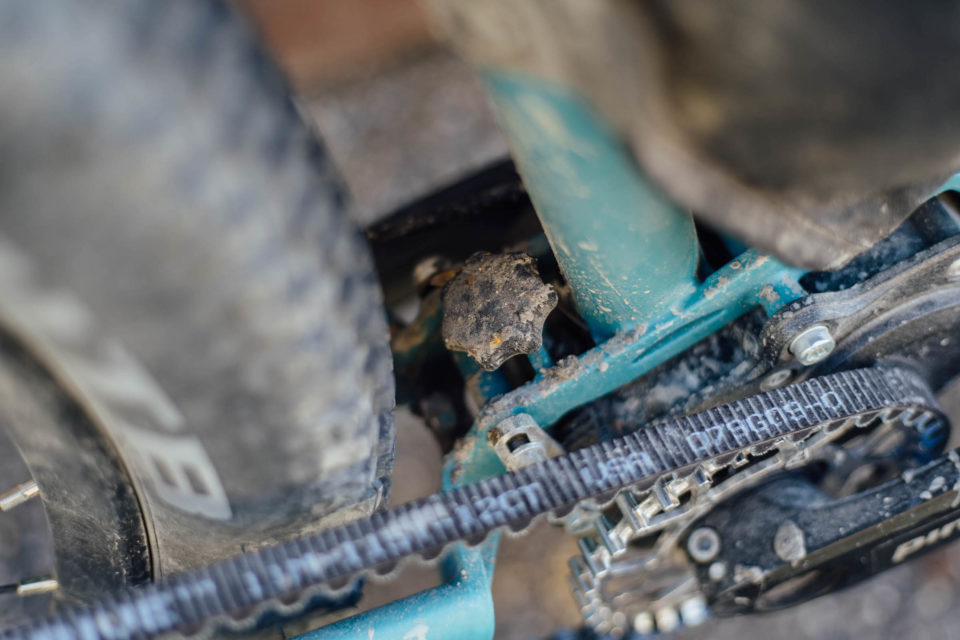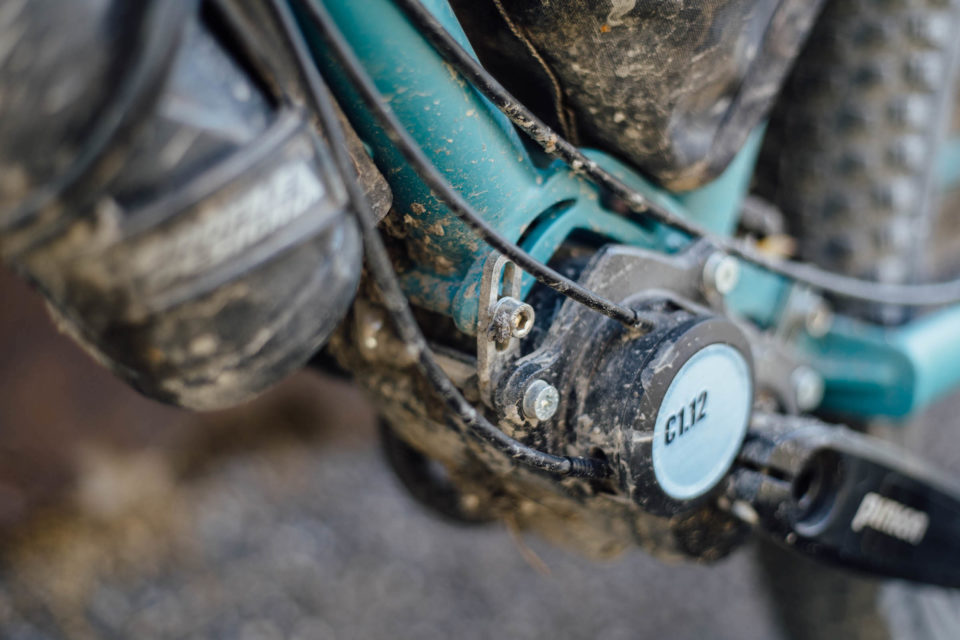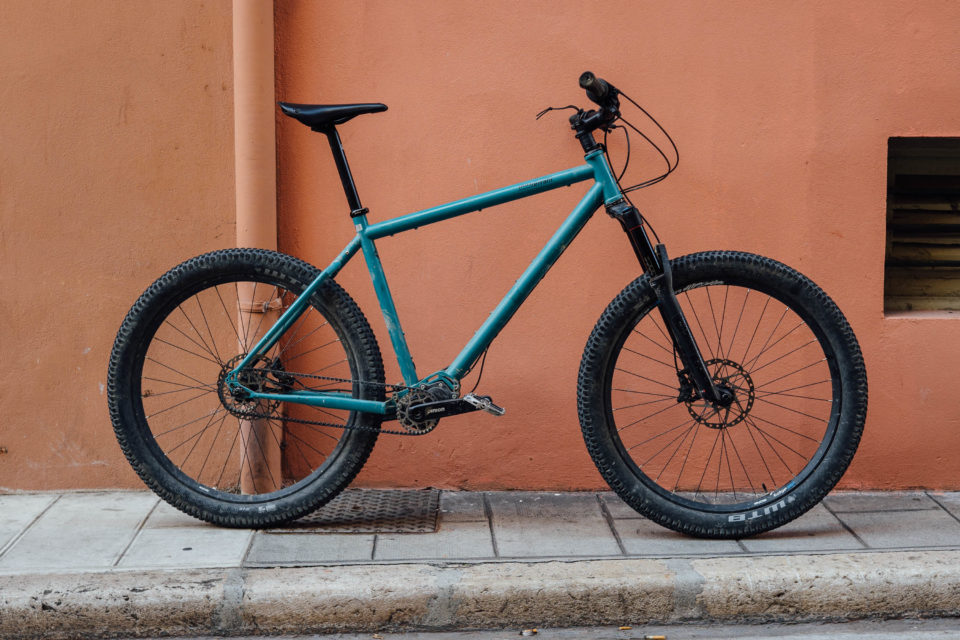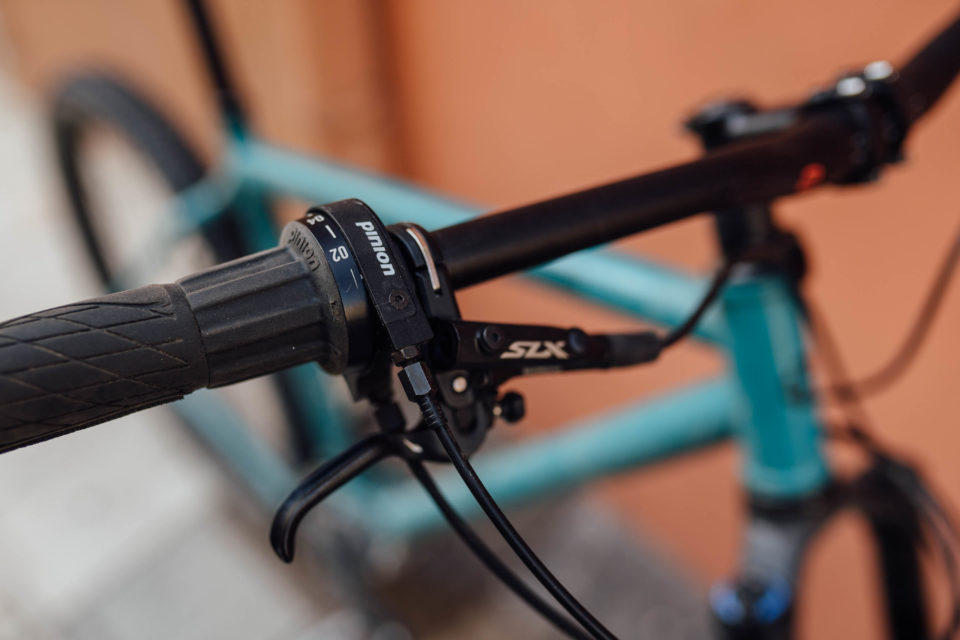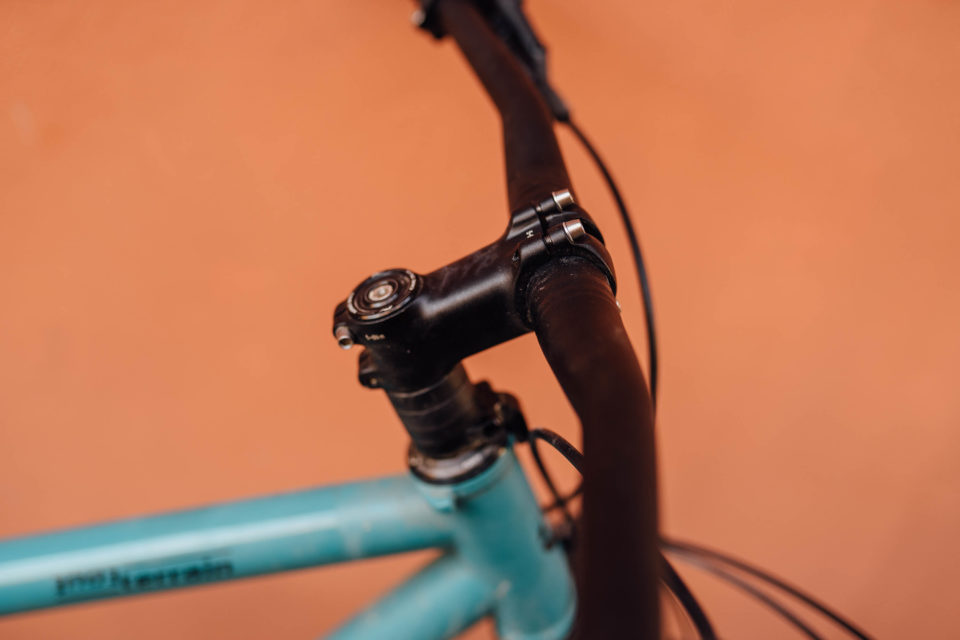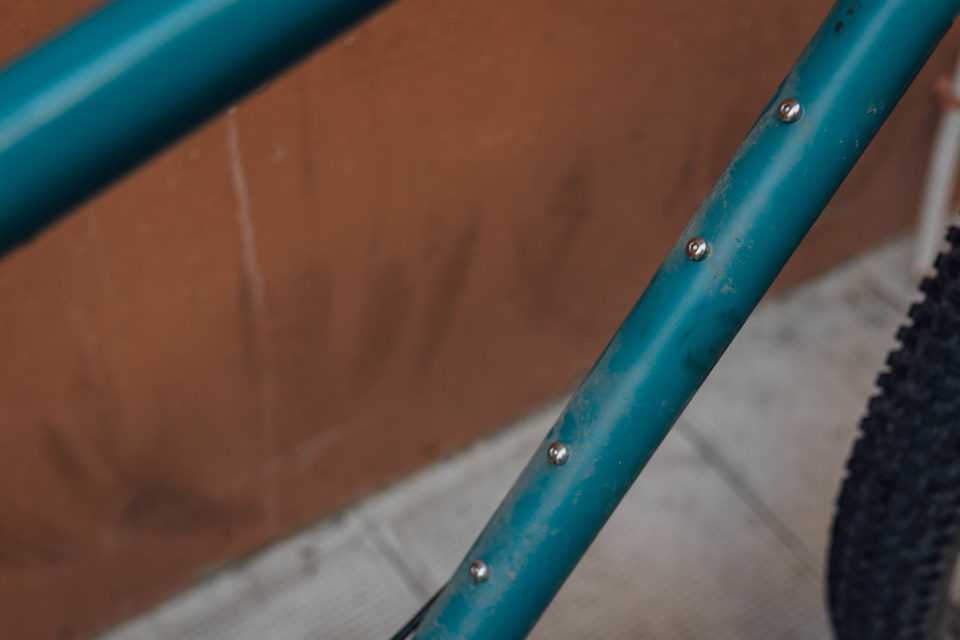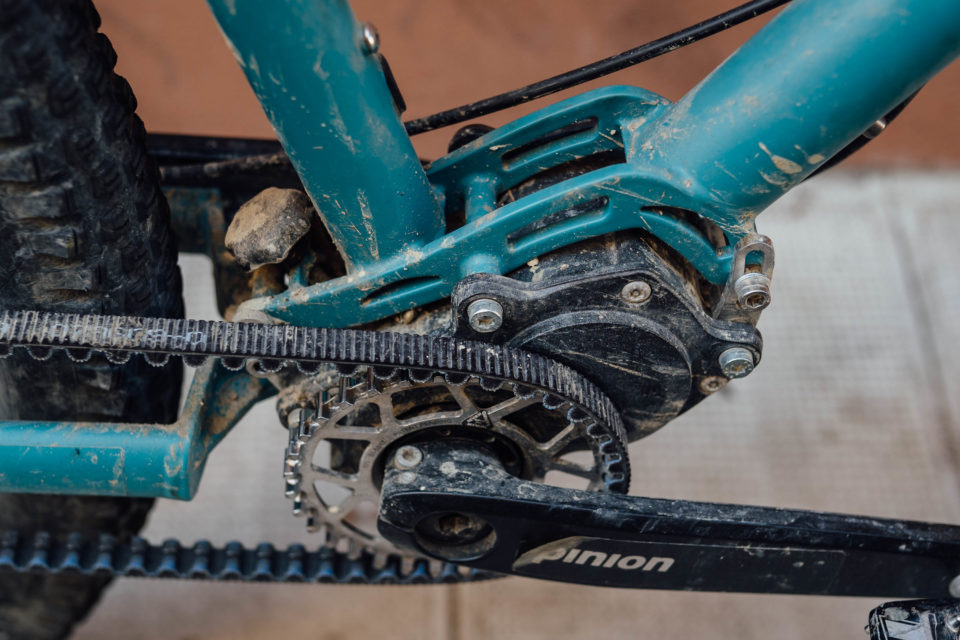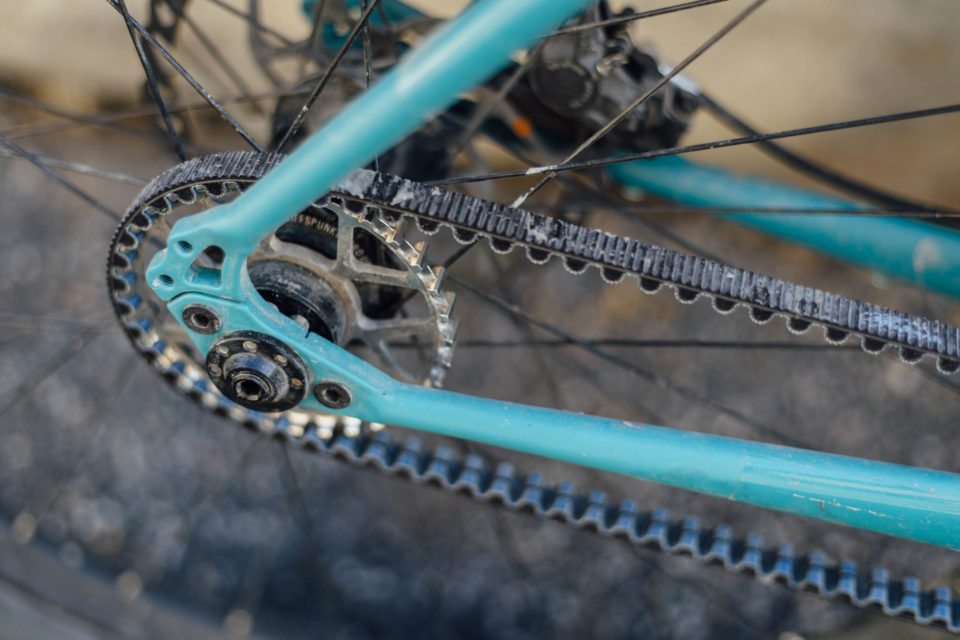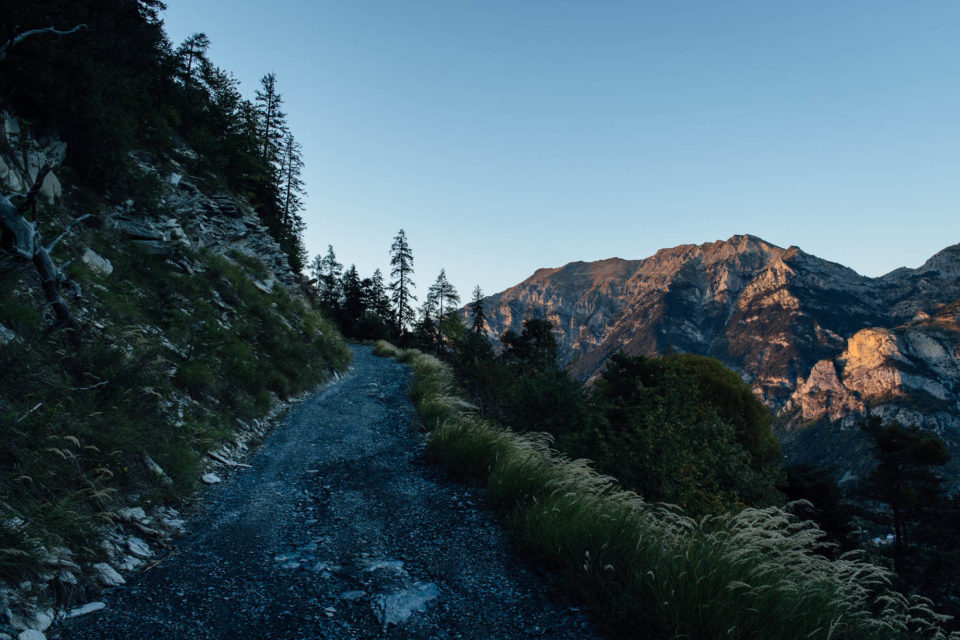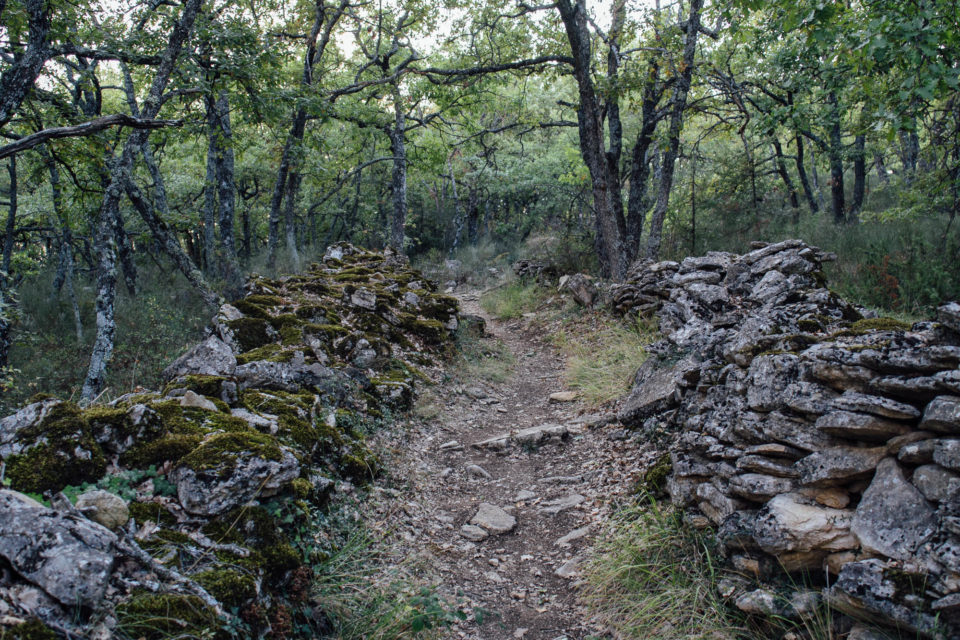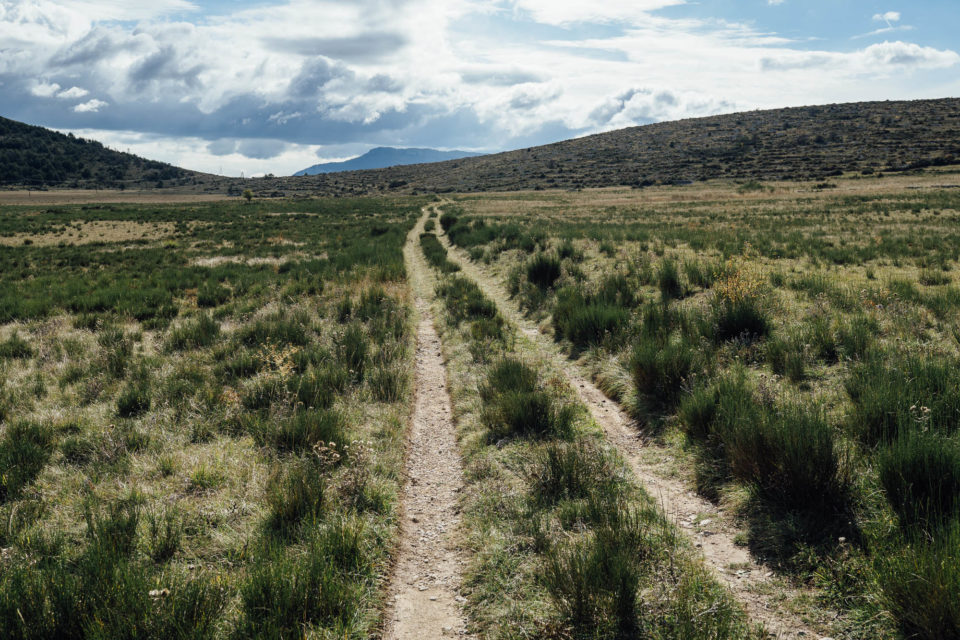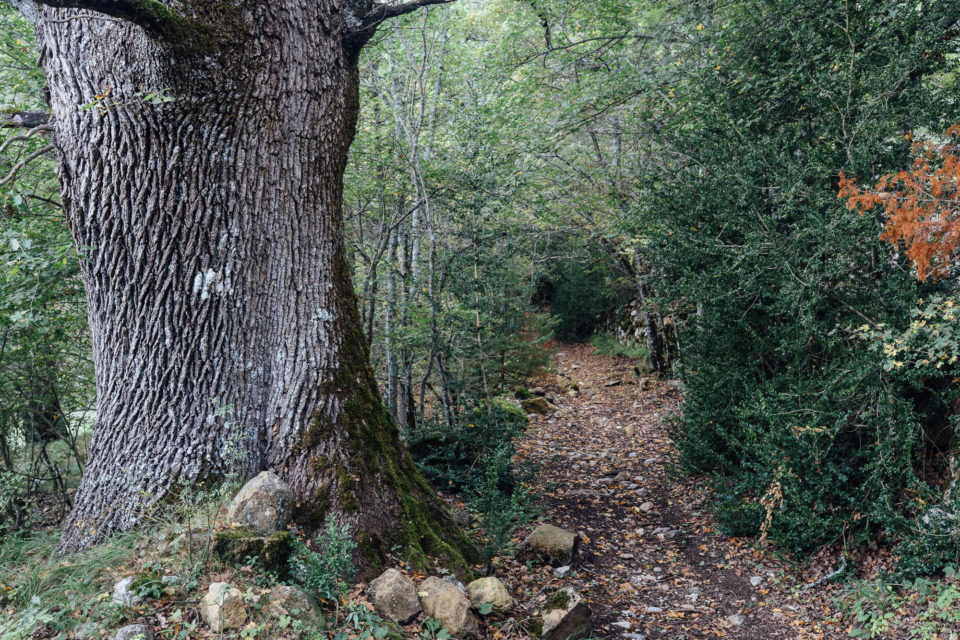Tout Terrain Outback Review: Vorsprung Durch Technik
Well established within the world of traditional touring, Tout Terrain’s first foray into the bikepacking realm comes by way of the 27.5+ Outback. Like other products in this German company’s extensive range of steel bikes, the Outback is a modern hardtail that embraces the technological marvels of an internal drivetrain, in the form of the Pinion C1.12. We take one to France’s Alpes-de-Haute-Provence to find out what it’s about…
PUBLISHED Mar 7, 2019
For those unfamiliar with the brand, Tout Terrain has long gained a reputation amongst traditional tourers for the quality of their steel bikes. And, within this often conservative world, they’re well known for a willingness to embrace new technology, be it as early adopters of hydraulic brakes, or even for their now discontinued, touring-specific full susser. Similarly, Tout Terrain have long offered bikes that are available in a range of drivetrains, be it belt drives, Pinions, or Rohloffs, as well as more conventional derailleurs and chains. They’re a company that has always infused their bikes with uncompromising quality and obsessive attention to detail; as a result, their range is inevitably expensive by most people’s standards.
To some extent, the same can be said of their first foray into the bikepacking realm. The Outback is both Pinion drive specific and, being manufactured in Taiwan but assembled and painted in Germany, very much a high-end offering. It forms part of Tout Terrain’s more recent X.Over category, one that also includes the leaner Scrambler, available with derailleurs or a Rohloff Speedhub, and designed for much lighter weight duties.

So, it’s perhaps of little surprise that the Outback comes with the usual trimmings that I’ve come to expect from this Freiburg-based company, having used a number of their touring trailers in the past, including the recently reviewed Streamliner. Visit the Tout Terrain website and you’ll find an online configurator that allows a number of changes to be made to the Outback’s build, tailoring it to your needs and pocket. For a fee (€159), you can even pick a RAL colour and finish – matt or shiny – and decal colour. The bike I rode, with the spec listed, a custom paint colour, and UK brake setup, came out with a €4153 price tag. Basic spec and stock colour start at €3890 and you can pick between a choice of a carbon fork or suspension, as well as a 27.5+ wheelset or 29er hoops. How does this translate for US residents? Although you’ll save 19% on VAT if ordering outside the EU, shipping and landing costs mean it likely come out the same in US dollars, approximately at least. The frame itself is available for $1,499.
- Highlights
- Angles: 68 Headtube, 74° Seattube
- Chainstay: 455mm
- Bottom Bracket: n/a
- Hub specs: 110mm x 15mm (front), 142mm x 12mm (rear)
- Seatpost Diameter: 31.9mm
- Max Tire Size: 27.5 x 3.0″ / 29 x 2.25″
- Weight (as tested): approx. 33 lbs (15 kg)
Designed primarily for bikepacking, the Outback steel frame is an undoubtedly burly affair. Its stout, oversized, double-butted chromo tubeset certainly seems capable of handling a good deal more than a minimal load. My brand new demo bike even came with a number of transparent frame protectors; I’m not sure if Tout Terrain includes these generally, but I recommend that they do, as they really help shield the bike’s tough powder coating from unnecessary bag scuffing. In terms of headtube length and general internal frame space, the Outback is reassuringly generous, working well with my Porcelain Rocket 52Hz framebag. Also of note is the Outback’s unusual ‘rocker’ system to cradle the Pinion and adjust the belt tension, rather than more simple sliding dropouts I’ve seen elsewhere. Whilst I didn’t need to tweak it during the three weeks I rode the bike across the Alpes-de-Haute-Provence, I’ll assume it’s well tested, given that it’s the same system used throughout the company’s Pinion-specific frames. When I asked Tout Terrain why they chose to use this more complicated and expensive frame design, I was told that it makes adjusting the belt tension easier as there’s less chance of misalignment, which is especially important when running a beltdrive and not a chain. It’s worth noting that as reliable as it may be, it’s also somewhat prone to collecting mud.
As the Outback is a bike very much aimed at bikepacking, there’s no shortage of eyelets throughout, both within the frame triangle (offering good options for a custom bolt in framebag) and below, as well as provision for a rear rack and fenders. The optional carbon fork will also take Anything Cages, should you prefer a rigid setup. Common to all Tout Terrains, there’s a headtube ‘stopper’ to prevent the handlebars swinging round too far, as well as nicely shaped dropouts (that include a frame splitter) and a general feeling of no-holds-barred attention to detail. The downtube features internal routing for a dropper post too. All in all, it’s a bike with a very clean, understated finish and decals.

As for the geometry of the bike, the Outback is relatively slack, at least compared to the bikes I usually bikepack on. Officially, it has a 68° head angle, but as the optional rigid carbon fork measures 495mm axle to crown and the 130mm suspension fork I tried is 522mm, the head angle on my test bike was slackened out a touch more. Wheelbase is on the long side too, at 1194mm for the XL size frame I rode. Also of note is the slightly steeper seat tube angle, more in tune with modern geometry designs, even if the Outback is still far removed from truly ‘progressive’ numbers.
Translating this into real world use, the Outback felt completely spot on for the way I like to ride a bike. In some ways, I’d consider it one of the best handling front suspension hardtails I’ve ridden. If I was to try and quantify why I liked it so much, I could put it down in part to a seat tube angle that shifts weight forward, which really seemed to help me (as a tall rider with a high centre of gravity) on technical climbs. Its lengthy wheelbase also helps the front end from lifting. A relatively slack head angle, in terms of a bikepacking orientated bike at least, was certainly a reason for the confidence I felt when pointing the bike downhill, which made the rocky steps and technical chutes I was riding a whole lot more fun. Whatever the precise reason, I found the Outback extremely well balanced for trail-orientated bikepacking. I did make one component change to help with personal fit: I swapped out the bars that came with it for a set of carbon SQ Labs 30×16, to lift the cockpit and add a little backsweep. They make a perfect match for the bike.
In terms of the bottom bracket height, the Outback is quoted as having a 65mm drop. Shod with 27.5 x 3″ tires, this creates a relatively low ground clearance and with it, the potential for pedal strikes. Perhaps the 130mm fork pushed things up a bit, as it never felt like an issue. Clearance wise, the Outback will also comfortably fit 29 x 2.25″ tires, which will also bump up the bottom bracket height.
But now, let’s dissect the beating metal heart of the bike: the mysterious black box that is the Pinion C1.12 drive. Yes, this German-made system does away with the relative simplicity of an exposed but clearly visible and replaceable derailleur – along with any options of using one at a later date – encasing its complete drivetrain within a unit that sits in place of the bottom bracket. Perhaps it’s because I hail from the UK and was brought up on wet and muddy trails, or maybe it’s because I like to travel overseas with my bike, and value any extra protection against the vagaries of inept baggage handlers or packing a bike in the bowels of a South American bus. But, whatever the reason, I’ve long been convinced of the benefits of internal drivetrains over derailleurs. I invested in a Rohloff Speedhub shortly after it came out and never looked back. Given the amount of use I’ve gotten from it, I’m sure it’s covered its cost at least a couple of times over.
The Pinion does things differently, though, and whilst I’ve always been curious about how the two compare, this is the first time I’ve had the chance to spend any trail time with one. I’ve long seen the benefits; moving a heavy drivetrain to the centre of the bike and positioning it within the frame’s lowest point makes sense. The option of building up two sets of very different wheels for the same frame is definitely appealing too. With a Rohloff, you’re tied into one wheelset at a time. And whilst ultimately, my three weeks riding the Outback weren’t enough to draw a definitive conclusion around ‘living’ with the Pinion and any of its quirks, it did give me a good overall feel for the system (Logan took a longer-term look at a similar drivetrain when he rode the Viral Skeptic and he seemed very impressed).
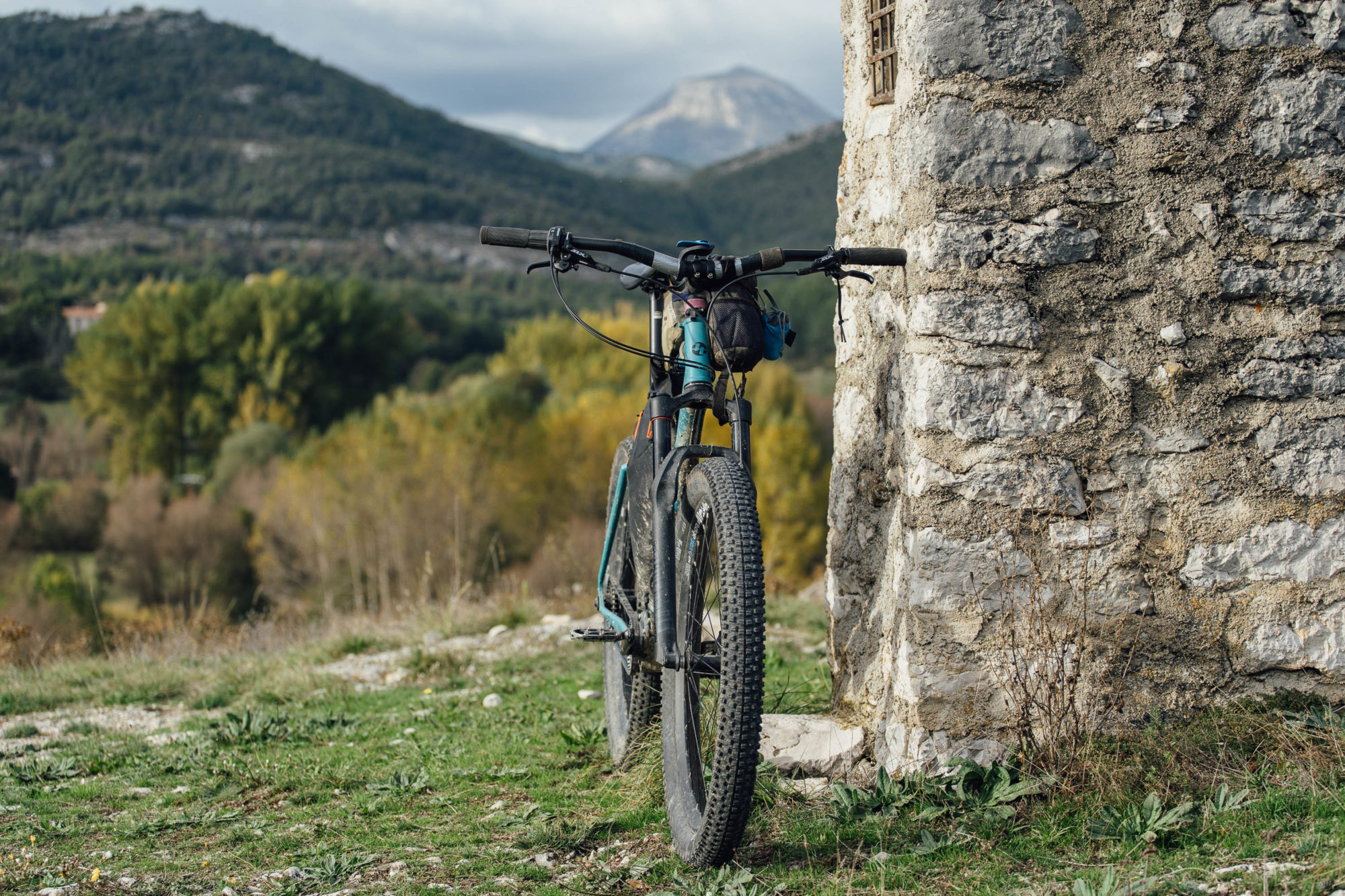
The good news is that shifting feels far lighter and cleaner than a Rohloff, and changing between gears under load felt perfectly feasible too – only shifts between gears two and three felt sticky. Perhaps this is partly because I’m used to a Gripshift-style Rohloff shifter, so I was quickly comfortable with operating the Pinion; I know those who come from derailleurs report a longer learning curve. Like a Rohloff, you can change a cluster of gears at once, or even from a standstill, which is really handy for heavily loaded bikes. A small but important detail for bikepackers: the cranks don’t spin when you’re pushing the bike, as they do with a Rohloff, which always infuriates me during hike-a-bikes, especially when my pedals shear chunks of skin from my shins. And the benefits of a low, central placement were immediately noticeable, even with a bikepacking setup. The back end felt fun and lively, which is hard to claim with any Rohloff-specced bike.
I did experience one immediate negative reaction: there’s a definite slow pickup between the pedal stroke and engaging a gear, because the Pinion’s engagement happens at the gearbox as well as the freewheel mechanism of the hub. Surprisingly, this delayed pickup never proved an issue on technical climbing, as I quickly got used to it. But it was definitely disconcerting when I first tried it.
As the latest and lightest version of this internal drivetrain, the C1.12 has a very generous range, even more than a Rohloff Speedhub. To try and get my head around the equivalent gearing, and offer a comparison with the older, even wider range P1.18 model, I asked Damian at Tout Terrain to talk me through the gearing equivalent. Here’s what he had to say: “The gearbox multiplies the gearing by 1.82 in the easiest gear and 0.3 in the hardest gear. So, with the 1:1 gearing on the bike as it is setup, you are getting the equivalent of 32T front and a 9.6T – 58.24T in the rear, totalling 600%. Each step is a 17.7% jump. The Q factor is 166mm, and weight is 2100g for the box. The 18-speed P-line gearbox has a 636% range, which is not a huge difference, but smaller jumps of 11.5% between the gears, a wider 174mm Q factor, and a weight of 2700g. The bike is available with this gearbox as an upgrade (649€) which we would generally recommend for longer tours or those really sensitive to gearing jumps.”
This means that the C1.12 is largely on par with a Rohloff weightwise, and once you take all of the variables into account (including frame materials), close to a kilo (2.2 lbs) heavier than a high-end Eagle drivetrain. At 600% (more than both Eagle and a Rohloff, which offers 500 and 525% respectively), its massive gear spectrum was very welcome in France’s extremely hilly Alpes-de-Haute-Provence. When it came to steep, long, or technical climbs, my own skillset or lung capacity ran out long before my gears did. I’d probably even have been happy to have a slighter larger cog up front for a faster cruising speed.
How about servicing the hub? All being well, the Pinion only requires an oil change every year, or after each 10,000km ridden. As with the Rohloff, it’s apparently a very easy process, with service videos available online (complete with chilled German electronica). If there is a complete failure, the gearbox can be completely swapped out – which simplifies matters compared to shipping a complete wheel – or the service turn-around time is about two weeks in case of a rebuild.
For one reason or another, well-heeled European riders have embraced the Pinion drive with relatively open arms, as they have with the Rohloff Speedhub. The North American market, by contrast, has been more reticent, perhaps because the riding conditions are often so much drier and less muddy. Certainly, it was always easier to see the immediate value of my Rohloff when I rode through UK winters: internal drivetrains are at their best when conditions are at their worst. Likewise, any loss in efficiency, when compared to a well-maintained derailleur system, becomes a moot point when riding through snow, mud, muck and anything else you might chance upon.
And it would seem that the Pinion C1.12, with its five year warranty, lives up to its promises, even if it can’t yet match Rohloff’s longstanding and largely exemplary record. However, I should point out that I experienced a distinct clicking a couple of weeks into my test period. It didn’t affect the riding, but it was disconcerting. Not being familiar with the system, I was reticent to pull off the proprietary cranks and check everything over. Indeed, Tout Terrain later put it down to a crank arm that had a small amount of play; when tightened up properly later, it disappeared. The take away? Make sure you’re completely familiar with your setup before you head out on a trip, especially if it’s one with unknown variables. Give the Pinion a shakedown tour, familiarise yourself with how the belt is tensioned, and change the cables to make sure you’re dealing with known territories. This leads me to one of my main issues with the Pinion system as a whole: how proprietary it is. Compared to the Rohloff, there are several more specific parts – like the crank arms – and as discussed previously, there are also two points of engagements – in the rear hub and the box itself – which technically means more chance of failure or bearing wear.

Lastly, a few words on the belt. I quickly forgot I was riding with one; it felt smooth, quiet, and direct. In theory, a belt offers a little less efficiency than a chain. But it’s lighter, lasts longer, and doesn’t require oil. The only issue I had with it was its squeaking when it was dusty and dry. And, unlike a standard chain, which can likely be found in any major city, I’d want to carry a spare if I was travelling for any significant length of time. Whilst I can see its benefits for commuting, if push came to shove, I think I’m more of a fan of chains for long distance touring.
- FRAME Tout Terrain Outback
- FORK Rockshox Revelation 130mm
- R. DERAILLEUR N/A
- SHIFTER Pinon
- COGGates Carbon Drive CDX 32T
- BELT Gates Carbon Drive CDX 115t
- HEADSET Cane Creek 40 Tapered
- REAR TIRE WTB Trail Boss 3.0″
- FRONT TIRE WTB Trail Boss 3.0″
- FRONT HUB Shimano XT 32H (Boost)
- RIMS Ryde Edge 30
- REAR HUB Pinion H2R
- FRONT ROTOR Shimano SLX 180mm
- REAR ROTOR Shimano SLX 160mm
- BRAKES Shimano SLX
- CRANKSET Pinion 175mm w/32t belt carrier
- HANDLEBAR Black Label Ergo 760mm by ToutTerrain
- STEM Black Label by Tout Terrain, 75mm
- SADDLE Brooks Cambium C15 All-Weather
- SEATPOST 30.9mm Black Label by Tout Terrain
- GRIPS Black Label Ergo 760mm by ToutTerrain
Pros
- Excellent attention to detail throughout, with a number of build options and finishes, including custom RAL colour.
- Great trail riding character both up and down the mountain.
- Reassuringly robust internal drive system that shrugs off rocks, mud, and anything else the trails throws at you, along with bungling baggage handlers too.
- The Pinion has much less impact on the way the bike handles than a Rohloff, especially unladen.
- The Pinion C1.12 has lighter shifting than a Rohloff and runs more quietly.
- Cranks don’t spin when you’re pushing the bike, which is great when you’re hike-a-biking.
- Fantastic gear range that suits both loaded climbing and higher speed cruising.
Cons
- Delayed pickup due to both gearbox and hub engagement.
- A good deal heavier than a high end 1x drivetrain.
- Frame is Pinion-specific, so in the event of any associated part failing or getting damaged, all your eggs are in one basket.
- More proprietaty parts than a Rohloff Speedhub.
- Belt is prone to squeaking in dry, dusty conditions.
- Although a belt should last a lot longer than a chain it’s advisable for riders to carry a spare on a long trip (they’re expensive, but at least they’re light)
- Similarly, you’ll need to think ahead as to when you might need to change both the front chainring and rear cog, which are also expensive and tricky to source.
- Less efficient than a well maintained derailleur system (until you hit mud and slop!)
- Model/SizeTout Terrain Outback S, M, L, XL (tested)
- Weight (as tested) Approx 15kg
- Price €3890 and up
- Place of Manufacture Taiwan/Germany
- Manufacturer’s Details Tout Terrain
Wrap Up
In terms of the bike itself, Tout Terrain’s Outback is an absolute blast to ride. The geometry proved to spot on; it’s a great balance for anyone who enjoys involved, challenging bikepacking routes. Long, white-knuckled descents were fast and fun, and just as importantly, I felt the bike helped me on technical climbs, thanks to both its seat angle and the all-encompassing range of the Pinion. In terms of finish and general attention to detail, I have no complaints either; everything about this bike exudes quality.
The Pinion C1.12 itself is a harder entity to get my head around, given the relatively short timeframe I spent with it. Overall, I came away with a largely positive impression on how it performs across a range of terrain. But I’d need to ride it more, and learn all its ticks and quirks, to be fully convinced for a long trip.
Ultimately, it boils down to the fact that I’m familiar with its main competition, the Rohloff Speedhub, and I trust it inherently. I can’t say the same for the Pinon, mainly because I haven’t put enough miles on it to be sure. I can certainly see some immediate advantages. Changing between gear numbers two and three aside, the shifting is much lighter than the Rohloff. The position of the drivetrain is noticeably better, which I can see having particular benefit for more technical, lightweight bikepacking style uses, or just unladen trail riding. The Pinion’s cranks won’t spin when you push the bike during a hike-a-bike, which sounds like a mere triviality but is actually very welcome. And, as I mentioned, the opportunity of building up two different wheelsets is appealing. A Rohloff hub ties you to one build at a time.
On the other hand, the delayed engagement in the pickup may well be an issue for some riders, even if I quickly became used to it. Derailleurs or internal drivetrain conundrums aside, it’s also hard to ignore the appeal of using a mostly generic frame; my Rohloff has graced more than half a dozen bikes over the years. If anything does go wrong, a bottom bracket is easy to replace, and in a worst-case scenario, I can throw on a rear derailleur and a conventional wheel. Aside from the specificity of the frame, the Pinion uses a number of extra proprietary parts. Should any one of these fail, become damaged, or wear out, you won’t find alternatives locally.
And yet… I’ve heard a similar argument for years when weighing up the inherent merits of derailleurs versus internal drivetrains, and it’s never stopped me from taking my Rohloff far and wide. If you’re prepared to fully commit to the Pinion system, as many have, the Outback is undoubtedly a really capable bikepacking bike to build it around, and one I can highly recommend.
And if you’ve read this far… The German phrase Vorsprung durch Technik is usually translated into English as ‘progress through technology’.
Rider’s Background
I’ve been embarking regularly on two-wheeled explorations for the last twenty years. Most recently, I explored the Republic of Georgia on dirt roads, rode the Colorado Trail, traversed Bolivia’s Cordillera Real, and followed the Trans Alps from Germany to Italy. Given my love for mountain biking and backcountry touring, my ideal journey fuses the two, keeping to quiet dirt roads and singletrack where possible.
Height: 6’05” (184.5cm)
Weight: 165 lbs (75kg)
Inseam (PBH): 91.4cm
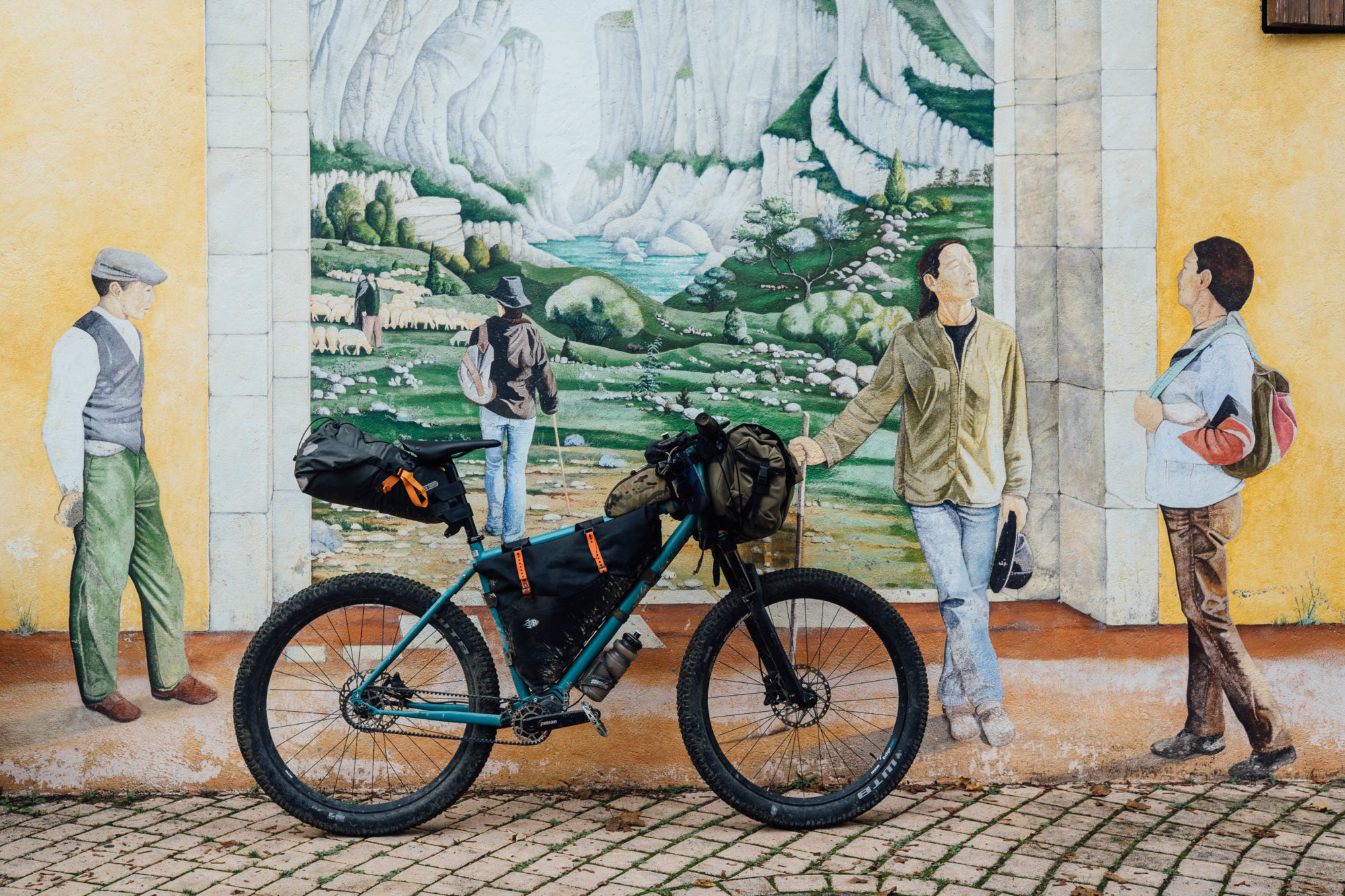
Please keep the conversation civil, constructive, and inclusive, or your comment will be removed.







